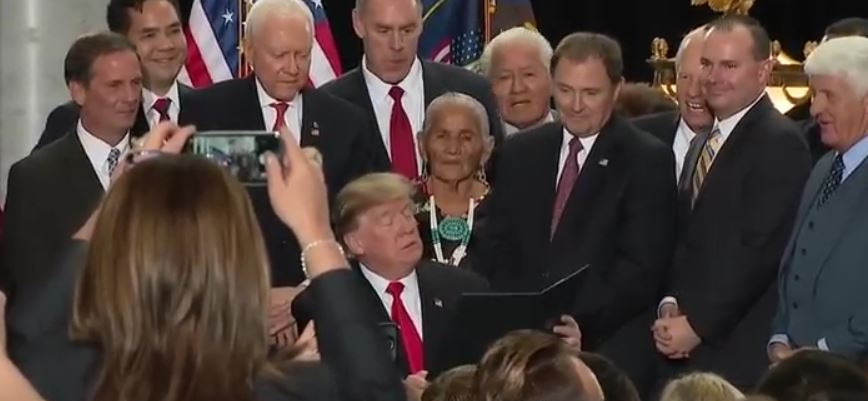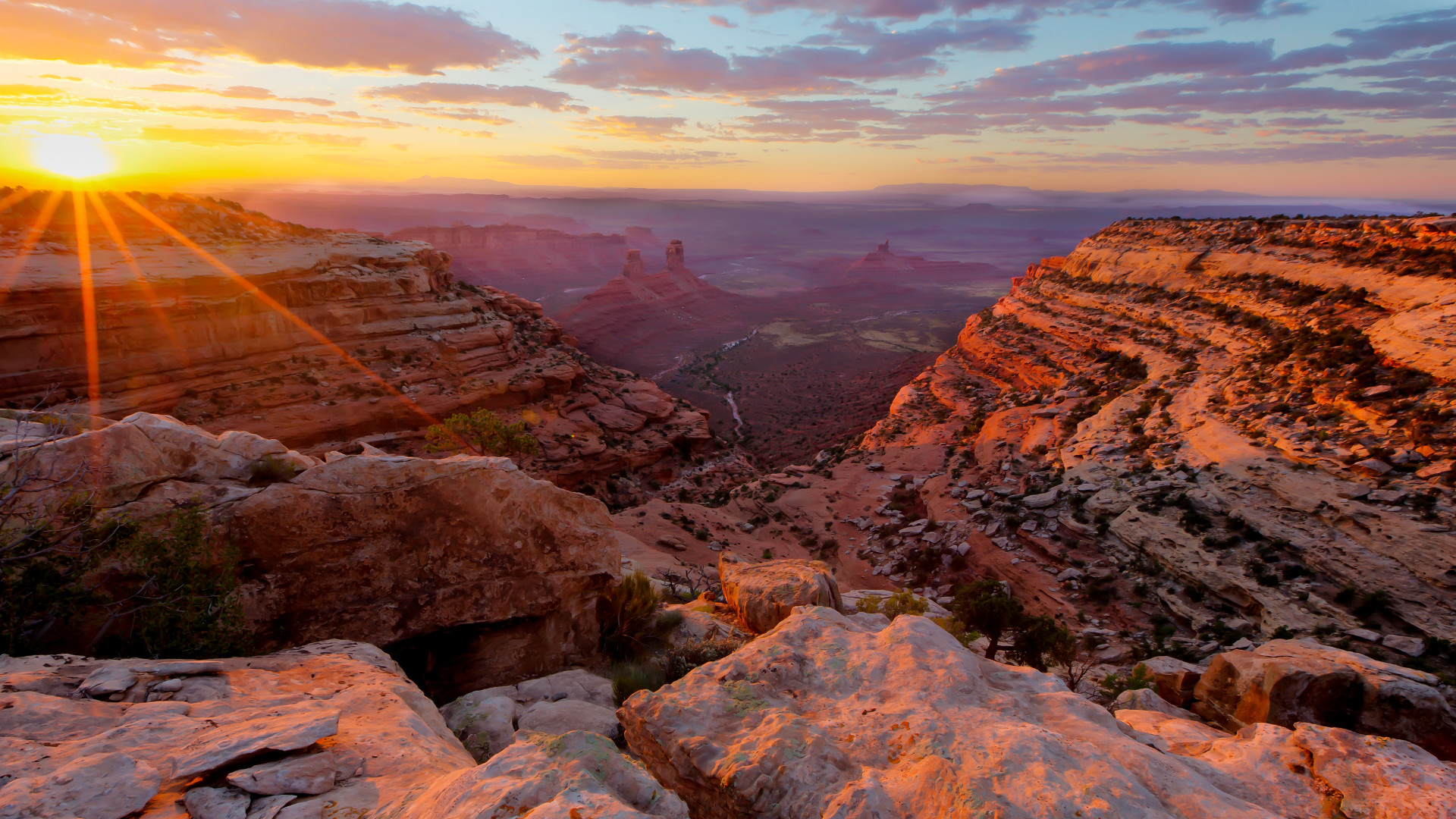“Offensive.” “Illegal.” “Racist.” Those are just a few of the words used by Native American leaders and groups this week in response to President Trump’s plan to remove protections from 85 percent of the 1.35 million-acre Bears Ears National Monument. Tribes have spent decades trying to protect the culturally and historically significant Utah landmark.
The long-rumored details of President Trump’s action — fulfilling vague promises he made back in May — were officially announced today at a heavily protested public event in Salt Lake City, Utah. “We got it done,” said the president during the event.
At the close of his speech, Trump signed two presidential proclamations to shrink both Bears Ears and Grand Staircase-Escalante National Monument by a total of more than 2 million acres and in the process carve up what remains into several smaller monuments.

Native leaders wasted no time condemning Trump’s plan in the days leading up to its formal announcement.
During one of many public protests held in Salt Lake City this past weekend, Navajo Nation Attorney General Ethel Branch said Trump does not have the authority to remove or shrink national monuments, a position on which Constitutional scholars agree.
Today Navajo Nation Attorney General Ethel Branch also reiterated: the President does not have the authority to rescind or diminish national monuments. #StandWithBearsEars! @WhiteHouse @POTUS #MonumentsForAll pic.twitter.com/a3FyOgVe44
— Protect Bears Ears (@savebearsears) December 2, 2017
Natalie Landreth, senior staff attorney with the Native American Rights Fund, also took that position in a prepared statement last week, calling Trump’s action “completely illegal.” She added: “This is an issue of tribal sovereignty, tribal self-determination. The five tribes that advocated tirelessly to create this monument did so to protect their ancient and modern cultural and spiritual importance. The fact that it is being revoked without any consultation, or even concern, for the tribes is offensive.”
Landreth also spoke to the cultural threats that led to the establishment of Bears Ears. “The monument was created in large part to help stem the tide of widespread looting and grave robbing, which was the original purpose of the Antiquities Act, and removal of that protection leaves more than 60,000 known sites in danger. It’s disgraceful.”
And it’s not just about history; it’s also about the cultural and political reality of today. “Bears Ears isn’t just about a few artifacts in isolated locations,” Shaun Chapoose, a member of the Ute Indian Tribal Business Committee, said in an earlier statement issued by the Rights Fund. “Our cultures are still here and still thriving. The Bears Ears region is a cultural landscape — a place to nurture our families in our traditions. The monument came about through government-to-government negotiations with the previous administration, state and local officials. The president’s proposed unilateral action pleases a few powerful Utah politicians. It’s a sad state of affairs, but we are prepared to fight for our rights, and to protect Bears Ears.”
Many critics spoke to how Trump’s plan attempts to erase the years of effort put into seeking protection for Bears Ears. “The establishment of the Bears Ears National Monument was a historic advancement for all five Native Nations (Navajo, Hopi, Ute, Ute Mountain, Zuni) who advocated for the monument,” Russell Begaye, president of the Navajo Nation, said in the Rights Fund prepared statement. “At the very least, President Trump should have consulted with the original local governments of the Bears Ears region: our five Indian nations. Instead, our many requests for consultation were ignored. An action to diminish the Bears Ears National Monument in any way will be an action against the Navajo Nation and the Navajo people who have worked so tirelessly to protect these lands.”
American Indian groups have been gearing up for a fight ever since the president first promised to remove protections for the monument, which was established by President Obama. “What the politicians are doing is violating what’s sacred to us,” Alfred Lomahquahu Jr., vice chairman of the Hopi Tribal Council, told The Nation last week, comparing it to removing protections for Arlington National Cemetery. “Our holy, sacred ground happens to be the big landscape out here. But people don’t understand that. Not honoring Bears Ears is against our religion. And it’s racist.”
Ironically, Trump said during his speech that removing protections from Bears Ears protects religion. “We will ensure the right of the people to live according to the faith in their hearts, which is why we will always protect your religious liberty,” he said.
Immediately following the end of Trump’s speech, the Navajo Nation announced plans to sue to protect Bears Ears National Monument. “This is a sad day for indigenous people and for America,” Navajo Nation Vice President Jonathan Nez said in a press release. “However, we are resilient and refuse to allow President Trump’s unlawful decision to discourage us. We will continue to fight in honor of our ancestral warriors who fought for our way of life, for our culture and for our land too.”
Updated: The Bears Ears Inter-Tribal Council held a press conference this afternoon. You can watch the video below:




Good coverage, John. As an Indigenous person, I appreciate The Revelator’s covering the perspectives of tribal nations, and Indigenous scholars and organizations. This is a profound loss, culturally, spiritually and ecologically. Federal agencies have an obligation to consult with tribal nations on a government-to-government basis before making a decision that affects them. Trump didn’t even try, I see from your report. This isn’t the end of the story by any means.
Time for the Navajo Nation to reclaim their land.